
We present: Layer 2 of Pensioen 1-2-3
See our pension schemes for more information about what they include and exclude. Layer 2 sets out all of the important features of the pension schemes. Brief information about each of these subjects is provided in layer 1.
Pensioen 1-2-3 consists of 3 layers
Layer 1: a brief introduction to your pension scheme.
Layer 2: more information about each of the subjects.
Layer 3: all of our pension fund’s rules.
If you prefer reading the arrangements on hard copy, please contact us.
What is covered by our pension scheme?

You will receive retirement pension from the age of 68
You build up retirement pension. Retirement pension is your income for later years. Because once you retire, you will no longer receive any salary. Generally, you will receive retirement pension from age 68, for as long as you live. You may opt to have your pension commence earlier. In that case, your pension will be lower.
The exact amount of your pension will depend on your salary and on the number of years of service with your employer.
APF Pension Fund has 2 pension schemes in place. Under the basic pension scheme, everybody builds up pension. If you earn more than € 77.890.- (AkzoNobel) or € 79.947.- (Nouryon, Nobian and Salt) in 2023, you will also participate in the top-up pension scheme (defined contribution scheme).
The basic scheme is a career average pension scheme. Under this pension scheme, you build up a portion of your final pension each year. When you retire, we add up all the pension portions. The amount of the pension that you build up in a year depends on your salary. The amount of your final retirement pension is based on your average salary during your career. Hence the term ‘career average’.
The top-up pension scheme is a defined contribution scheme. Under this pension scheme, contribution is deposited every month. That contribution is invested. The deposited contributions together with the investment returns form your pension capital. When you retire, you will use that capital to buy a lifelong pension benefit. This means that the amount of pension that you build up under the top-up pension scheme will strongly depend on investment returns.

Your partner and children will receive a pension when you die
In addition to your own retirement pension, you also build up partner's pension and orphan's pension. When you die, your partner and children will receive that pension. The amount of the partner's pension that your partner will receive depends on the moment of your death.
If you die during your employment with your current employer, your partner will receive 70% of the retirement pension to be achieved. If you die after you have left employment, your partner will receive the accrued partner's pension. This will, in principle, be 70% of your accrued retirement pension.
Your partner will receive the partner's pension from the date of your death until the date of his or her own death. If you leave your employer's employ or if you retire, you may opt to have the partner's pension converted into additional retirement pension. Your partner must, however, agree to this. Conversely, you may also opt for lower retirement pension in exchange for additional partner's pension.
Orphan's pension is not a lifelong benefit. Your children (if any) will receive the orphan's pension until they reach age 18. Student children will receive orphan's pension until they reach age 27.
You can find the exact amount that your partner and children will receive in your Uniform Pension Overview. You find this at My pension. Log in with your DigiD.
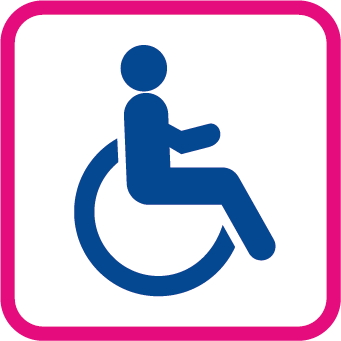
You will continue to accrue pension if you become disabled
You will receive disability pension if you are fully disabled and your income exceeded € 66,956.94 annually (2024). This is the WIA income limit. The disability pension will supplement the benefit from the Employee Insurance Agency (UWV). The UWV benefit is based on a percentage of your salary and, moreover, the salary on which you can receive a benefit is capped at the WIA income limit. You will receive a small supplement to your income if you receive a WGA benefit and your income does not exceed the WIA income limit.
If you receive a WGA benefit, the disability pension will supplement that benefit up to 75% of the salary that you earned before becoming disabled. In the event of an IVA benefit, we will supplement that benefit up to 80% of the salary that you earned before becoming disabled. This payment will stop once you receive the state pension (AOW).
The disability pension is intended to cover your current income. Your future income has also been taken care of. During the period of disability, you will continue to build up pension if your degree of disability exceeds 35%. You and your employer will not pay any contribution for this. The contribution will be paid by the pension fund.

You can find all the rules in our pension regulations
The regulations set out all details about the pension scheme of APF Pension Fund at layer 3
Our website also explains the components of the pension scheme in further detail. Or check out My pension. You can log in with your DigiD for personalised information.
What is not covered by our pension scheme?
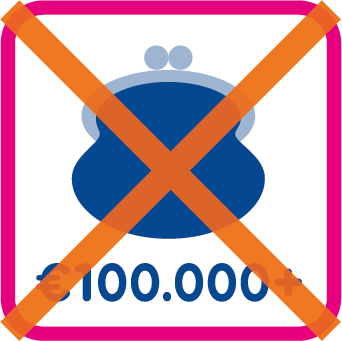
You do not accrue pension above a stipulated salary
If your gross annual salary exceeds € 137.800.- annually (2024), you do not accrue any pension on any salary in excess of that amount. The tax rules do not allow for this. As a result, the difference between your current and future income will become bigger.
Please note that your final pension will be significantly lower than your current salary. Go to My pension and log in with your DigiD. If necessary, you can arrange additional pension yourself. There are various ways to do so. For example, via a financial product, such as saving in a blocked account (banksparen) or via an annuity insurance (lijfrenteverzekering). The pension fund cannot, and is not allowed to, help you when taking out these products. You will have to engage a financial adviser.
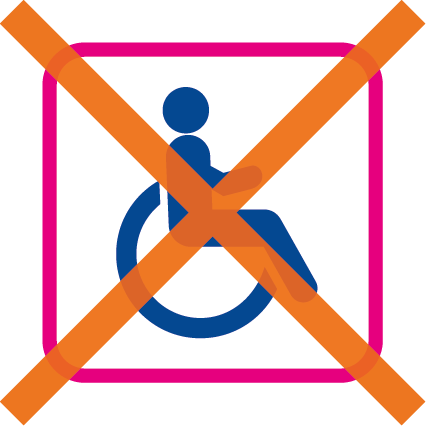
You do not receive a disability pension if incapacitated for work
If you are partially incapacitated for work, or if your income is below € 71.628 annually (2024), this is the WIA income limit, no disability pension has been arranged for you at APF Pension Fund.
However, you may qualify for a UWV benefit. You may also be entitled to a supplement to your income through your employer.
How do you accrue pension?
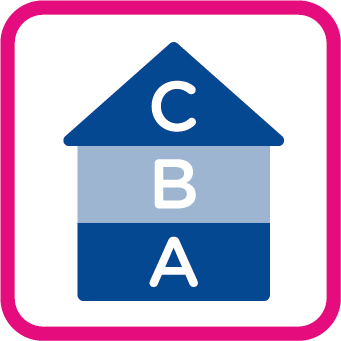
A. State retirement pension (AOW)
You will start to receive a state retirement pension from the government as soon as you reach your statutory retirement age. Your date of birth will determine which statutory retirement age applies to you, as this is set to increase in the years ahead. For the exact rules, the amounts applicable and your statutory retirement age, see the website for the Social Insurance Bank (Sociale Verzekeringsbank): SVB.nl.
Please note
The state retirement pension amount you receive will depend on your civil status and may be lower if you have not always lived or worked in the Netherlands.
B. Pension at APF Pension Fund
You will accrue a pension with the APF Pension Fund because you are an employee of AkzoNobel or Nouryon, Nobian and Salt. You will accrue part of your pension every year. Once a year, you will receive a Uniform Pension Overview (UPO).
The APF Pension Fund administers 2 pension pension schemes. Everyone accrues a pension under the basic pension scheme (a career average pension scheme). However, if you earn more than € 77.890.- (AkzoNobel) of € 79.947.- (Nouryon, Nobian and Salt) in 2024, you will also participate in the top-up scheme (a Defined Contribution Scheme). See this Pension 1-2-3 and our website for more information about our pension schemes.
Also see mijnpensioenoverzicht.nl. You will find an overview of the pension you have accrued via all of your employers and also the state retirement pension amount you will receive under the Dutch general retirement pensions act (Algemene Ouderdomswet, 'AOW'). You will see the net amounts applicable.
C. Pension that you arrange yourself
You can choose to supplement your state retirement pension and the pension you accrue via your employer yourself: with general savings, savings accrued in a blocked account with your bank (banksparen) or insurance (like an annuity), for example.
Whether or not you feel that it is necessary to accrue an extra pension amount will depend on your particular situation and wishes. You can calculate your pension amount yourself in My pension. Log in with your DigiD.
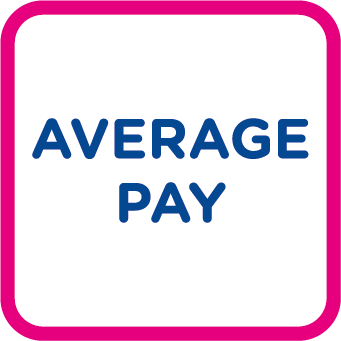
You are accruing pension in a career average pension scheme
Every year, you accrue a portion of your final pension. When you retire, we add up all the pension portions. The amount of your final pension is based on your average salary during your career at your employer. If your salary exceeds € 77.890.- (AkzoNobel) of € 79.947.- (Nouryon, Nobian and Salt), it will be subject to the top-up pension scheme (a defined contribution pension scheme).
In 2024, you accrue your pension through the basic pension scheme (a career average pension scheme) up to a salary of € 77.890.- (AkzoNobel) or € 79.947.- (Nouryon, Nobian and Salt).
The amount of the pension that you accrue in a year depends on a number of factors. First of all, the pension base: this is the part of your salary that counts towards your pension. You accrue your pension through the basic pension scheme (a career average pension scheme) up to a salary of € 17.545.- annually to € 77.890.- (AkzoNobel) or € 79.947.- (Nouryon, Nobian and Salt). You do not build up pension on your full salary, because you will also receive state pension later. The part of your salary that does not count towards your pension accrual (€ 0.- to € 17.545.- annually) is called ‘deductible’.

You are accruing pension in a top-up pension scheme
If your fixed salary is higher than the fiscal salary limit (€ 77.890.- for AkzoNobel and € 79.947.- for Nouryon, Nobian or Salt in 2024), you will participate in the top-up pension scheme.
The top-up pension scheme is a defined contribution scheme. In this pension scheme contributions are deposited and invested, which results in investment returns. Together, the deposited contributions and the investment returns make up your pension capital (in the defined contribution scheme). When you retire you will use the pension capital to purchase a retirement pension and a partner’s pension.
Would you like to know more about the top-up pension scheme? Then you can read the brochures at layer 3.
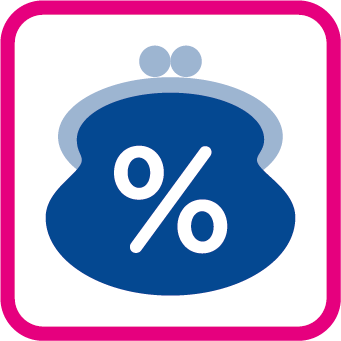
Your accrual rate
You accrue pension on your pension basis, which is your pensionable salary minus the deductible. In 2024, you accrue 1.875% (AkzoNobel) or 1.875% (Nouryon, Nobian and Salt) of your pension basis.
Pensionable salary means your gross fixed annual salary, including holiday allowance, fixed shift work allowance, fixed personal allowances, and variable income components. The pensionable salary amounts up to a maximum of € 137.800.- annually (2024).
The deductible is the same for everybody and amounts € 17.545.- annually (2024). The deductible is deducted from your pensionable salary. The reason for this is that you will also receive (Dutch) state retirement pension later. Therefore, you do not have to accrue pension on your full salary.
In 2024, under the career average pension scheme, you will accrue pension from € 17.545.- up to a salary of € 77.890.- (AkzoNobel) or € 79.947.- (Nouryon, Nobian and Salt). For any excess salary up to € 137.800.-, you will accrue pension under the top-up pension scheme (the defined contribution scheme).
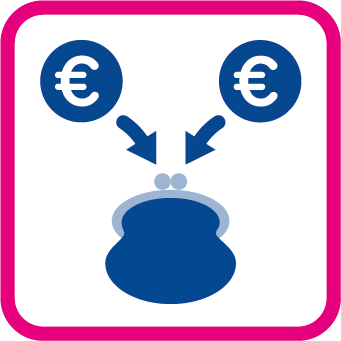
You and your employer pay for your pension together
In the career average pension scheme you and your employer jointly pay the costs of your pension. Your employer withholds your contribution from your gross salary. Your exact contribution is specified on your salary slip.
For the defined contribution scheme the employer pays the contributions to you as participant. At least 60% of these contributions should be deposited into the defined contribution scheme. The part of the contribution that is not deposited into the defined contribution scheme (maximum of 40%) is added to your gross salary, after deduction of social security contributions. You have to arrange this with your employer.
What are your options?
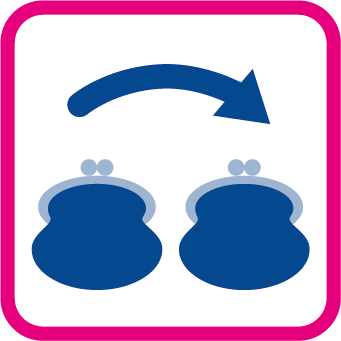
Transferring your pension
If you change jobs, you will often change pension schemes as well. You can opt to transfer the pension that you have already accrued to your new pension fund. This is known as ‘value transfer’.
It is hard to assess whether value transfer is favourable for you. If you opt for value transfer, the pension built up in the past will be converted into a pension under your new pension scheme. Because pension schemes differ, value transfer may affect the amount of your pension. The value of your pension will, however, always remain the same. A financial adviser may assist you in making this choice.
Value transfer has to be arranged through your new pension fund. You will have to file a request for value transfer with that fund. Subsequently, you will receive a proposal, which sets out how much pension you will receive under the new pension scheme. The value transfer will be initiated only if you agree to the proposal.
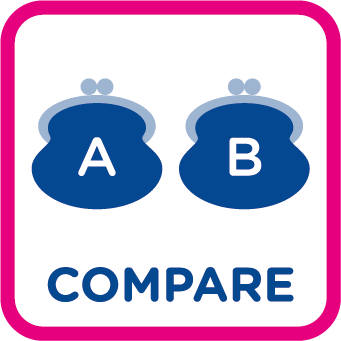
Comparing your pension
If you want to compare your pension scheme with another pension scheme, view the pension comparison calculator in layer 3. You will find separate calculators for a comparison with the basic pension scheme (the career average pension scheme) and the top-up pension scheme (the defined contribution scheme).
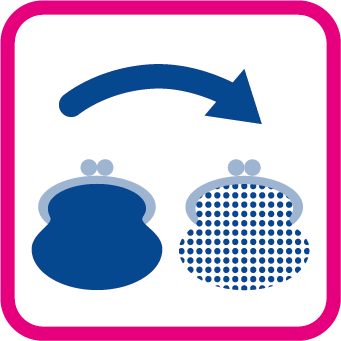
Exchanging old age pension for partner’s pension
When you retire, you will be able to convert part of your retirement pension into a partner’s pension.
When you retire, you will be able to opt for a different division of your retirement pension and partner’s pension. You could decide to convert your retirement pension into a partner’s pension.
Although this will leave you with a lower retirement pension, your partner will receive a higher partner’s pension if you die. However, certain limits do apply. For example, the partner’s pension may never be higher than your retirement pension.
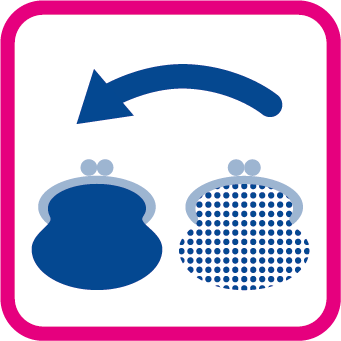
Exchanging partner’s pension for retirement pension
When you retire, you could choose to convert your partner's pension into a retirement pension.
If your partner has his or her own pension, it may not be necessary to arrange a partner’s pension for him or her. In this situation, you could choose to convert the partner’s pension into a retirement pension. Your retirement pension will then increase, while the partner’s pension will decrease. However, this choice will only be possible if your partner agrees.
If you do not have a partner, the partner’s pension will automatically be converted into a higher retirement pension.

Early retirement
Your pension has been calculated as if you will receive pension from age 68.
You may opt to have the pension commence before you reach age 68, but not later. The pension that you will receive annually will be lower in the event of early retirement. That is logical: after all, you will receive pension for a longer period of time. Your pension will fall by approximately 7% for each year of early retirement. You can have your pension commence at age 60 at the earliest.
The pension fund assumes that you will retire on the date that you receive state pension (AOW). After all, that is the end date of your employment agreement. If you wish to retire at another time, you will have to notify the pension fund thereof yourself. You must also coordinate this with your employer.

Semi-retirement
If you do not wish to stop working entirely, but you do wish to take it easier, then you may opt for semi-retirement.
If you opt for semi-retirement, you will continue working part-time. As a result, you will receive a lower salary. That is why you will have part of your pension commence early. It is up to you to decide when you will stop working altogether and have your pension commence fully.
You are to arrange semi-retirement in consultation with your employer. Subsequently, communicate your preference to the pension fund.
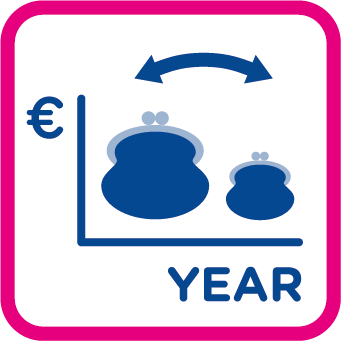
Receiving a higher or lower pension first
Generally, you will receive the same pension amount each month. You can, however, choose to receive a higher pension during the first few years and a lower pension later. For example, if you have not repaid your mortgage or if you do not yet receive state pension. Conversely, you may also choose to receive a lower pension during the first few years and a higher pension later. The lower pension is at least 75% of the higher pension. The amount of the pension may not change after age 72.
How secure is your pension?
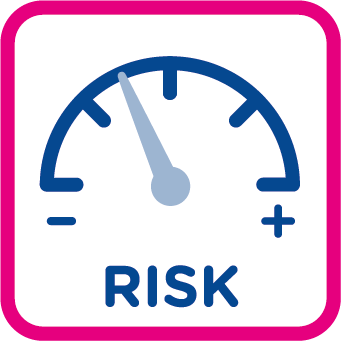
Your pension is subject to risks
The amount of your pension is not fixed. There is a number of risks that may affect your pension amount:
- People live longer
If life expectancy increases, the pension will become more expensive. After all, the pension must be paid for a longer period of time. In that case, the pension fund must set aside more money to be able to pay the pension. - Interest rates fall
Interest rates impact the financial situation of the pension fund as well. The lower the interest rate, the more money we must set aside now. As the interest will yield less income, we must set aside more money for your pension. - Disappointing investments
Pension moneys are being invested. Disappointing investment returns will impact the financial situation. - Regulations
Pensions may become subject to new rules. For example, stricter rules about how much pension you may accrue. Or an increase in the retirement age. This means that regulations may also affect your pension.

We try to increase your pension yearly
Money loses value (nearly) each year. That is why we try to let your pension develop in line with the prices.
You participate in the career average pension scheme
In the career average scheme APF Pension Fund tries to increase the pension each year. This is possible only if our financial situation allows for it. We try to let your pension grow in line with the increase in prices. We decide each year if we can increase your pension and by how much. Unfortunately, we have not been able to fully increase the pensions each year over the past few years.
We increased your pension by 8.73% as at 1 January 2023
Part of this increase was the result of a temporary statutory measure, which allows us to already increase the pensions with a minimum policy funding ratio of 105%. Normally, this ratio is 110%. Between September 2021 and September 2022 prices have risen by 0.21%.
Over the past 10 years, we have made these changes to the pensions in the career average pension scheme
On 1 January 2023, there was a pension increase (over 2022) of 8.73%. And, due to adjusted statutory regulations as of 1 July 2022, the pension fund was in a position to increase pensions as of 1 August 2022 (over 2021) by 2.7%. The table below shows whether an increase in prices has been compensated by an increase in the value of pensions.
| Date change | Increase of your pension | Price increase* |
| 1 January | 8.73%** | 14.53% |
| 1 August 2022 | 2,70%** | 2,70% |
| 1 January 2022 | 0.00% | 2,70% |
| 1 January 2021 | 0.00% | 1,11% |
| 1 January 2020 | 0.00% | 2.65% |
| 1 January 2019 | 0.55% | 1.88% |
| 1 January 2018 | 0.00% | 1.45% |
| 1 January 2017 | 0.00% | 0.32% |
| 1 January 2016 | 0.00% | 0.65% |
| 1 January 2015 | 1.59% | 0.98% |
| 1 January 2014 | 1.00% | 2.51% |
| 1 January 2013 | 0.50% | 1.24% |
*The increase in prices in that period from 1 Januari up to and including 31 December.
** Part of this increase was the result of a temporary statutory measure, which allows us to already increase the pensions with a minimum policy funding ratio of 105%. Normally, this ratio is 110%.
***This increase was the result of a temporary statutory measure, which allows us to already increase the pensions with a minimum policy funding ratio of 105%. Normally, this ratio is 110%.
You participate in the defined contribution scheme
Your pension capital in the defined contribution scheme is not increased by (annual) supplements/indexation.
Your future pension will depend mainly on:
• the deposited pension contributions
• the investment returns
• the pension capital on the retirement date
• how much pension you can purchase with your capital
If you already receive pension from the defined contribution scheme, or if you no longer participate in this pension scheme and have already purchased pension entitlements with your pension capital, each year the pension fund will try to let your pension entitlements – or pension in payment – grow in line with the increase in prices over the period September – September of the previous year. The maximum increase is 4%.

What happens if we have a deficit
We have agreed a fixed contribution with the employer. Not more, but not less either. Under normal circumstances, the contribution paid by your employer will be more than enough to be able to finance your pension. There are, however, no guarantees. If the pension fund's performance is poor, APF Pension Fund will be responsible for correcting the fund's financial situation. For example, by not granting any indexation or by lowering the pensions.
The financial situation depends on various factors
• First of all, interest rates play a key role. If interest rates fall, we will have to set aside more money, as a result of which the financial situation will worsen. This can be compared with a savings account. If you need € 1,000.- in 20 years’ time and the interest rate is 1%, you will need to have € 820.- in your bank account now. Together with the interest, you will have accumulated € 1,000.- after 20 years. If the interest rate is 4% rather than 1%, you will now only need to have € 456.- in your account to have € 1,000.- after 20 years. This also applies to pension funds: the lower the interest rates, the more money we will need to set aside.
• In addition, the investment rates play a role as well. Pension moneys are being invested. Disappointing investment returns will impact the financial situation. We will have less money than expected, as a result of which our financial situation will worsen.
• Finally, pensions may become more expensive because people live longer. If life expectancy increases, the pension must be paid for a longer period of time, whereas no contribution whatsoever has been paid for it. In that case, the pension fund must set aside more money to be able to pay the pension.
If there is a deficit
If we have a deficit we may have to take measures. These are listed in a recovery plan.
Examples of measures for the career average pension scheme:
• Your pension will not grow (entirely) in line with prices.
• Your pension will decrease. This only happens if we have no other options.
• Your premium will increase.
What costs do we incur?

What costs do we incur?
APF Pension Fund incurs costs to administer the pension scheme:
• Execution costs
• Asset management costs
Administration costs are costs that are incurred for the administration, communication and, for example, the payment of the pension benefits. The administration costs of APF Pension Fund are € 140.- per participant, i.e. € 4.3 million in total.
Asset management costs are costs incurred for investing the pension moneys. Investing money involves costs. For example, APF Pension Fund pays asset managers. The fund incurs transaction costs as well. These are costs for buying or selling investments. The asset management costs are € 35.9 million, € 9.6 million of which are transaction costs.
We are transparent about these costs and look critically at the money we spend. The annual report includes a breakdown of the costs incurred by APF Pension Fund.
When do you need to take action?

If you change jobs
Value transfer has to be arranged through your new pension fund. You will have to file a request for value transfer with that fund. Subsequently, you will receive a proposal, which sets out how much pension you will receive under the new pension scheme. The value transfer will only be initiated if you agree to the proposal.

If you become incapacitated for work
APF Pension Fund will inform you of the consequences of disability. You do not need to notify us, for we will be notified by UWV. On the UWV website you can read more on the benefit that you will receive from UWV: UWV.nl.

If you are planning to cohabit, or if you are getting married or become registered partners
If you get married, enter into a registered (civil) partnership or start living together, a partner's pension has been arranged for your partner for when you die. In the event of a marriage of a registered partnership, partner's pension has been arranged automatically. You will not need to take any action yourself.
Please note: if you are living together but are not married, your partner will not automatically be entitled to partner's pension when you die. In order to have your partner qualify, you will need a notarial cohabitation contract. You are to forward a copy of that contract to us. Register your partner in My pension. Log in with your DigiD.

If you divorce, no longer cohabit, or if your registered partnership stops
Legislation provides that your ex-partner will receive 50% of your retirement pension accrued during your marriage or registered partnership. You may agree on another division together. If you wish the pension fund to arrange the division, you are to notify the pension fund of your divorce within 2 years. In that case, we will arrange the division, as agreed with your ex-partner.
The partner's pension that you have accrued until the end of your relationship is for your ex-partner. We call this ‘special partner’s pension’. This also applies if you cohabit officially. That is why it is important that you deregister your partner if you terminate the cohabitation contract. Do this in My pension. Log in with your DigiD.
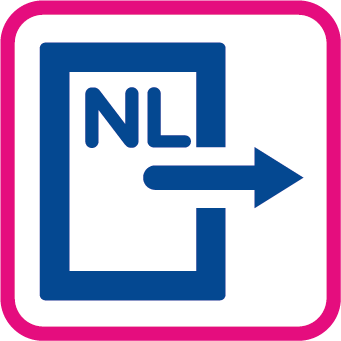
If you move to another country
If you move abroad, you will no longer be registered in the Municipal Database. The pension fund receives information on your civil status and your address via this database. As you live abroad, you must notify us of those matters yourself.
You will not build up any state pension if you live abroad. For the consequences thereof, view the website of Sociale Verzekeringsbank: SVB.nl.
Finally, be aware that different tax rules may apply abroad. This may affect your pension.

If you become unemployed
If you become unemployed, your pension accrual will also end. The pension that you have accrued will remain yours.
Your employer will deregister you from APF Pension Fund
You don't need to inform us.
We will inform you of the value of the pension that you have accrued with us
Every year, a new pension overview will be made available in My pension. Every 5 years, you will also receive a pension statement from us.

If you start working more or fewer hours
If you start working more or fewer hours, you will also build up more or less pension. You do not need to notify the pension fund, for we will receive this information from your employer.
The amount of pension that you build up is calculated on the basis of your full-time salary. If you do not work full-time, your annual pension accrual will be multiplied by your part-time percentage. As a result, you will, relatively speaking, build up less pension.

If you take unpaid leave
If you take unpaid leave, you will no longer build up pension. After all, you do not receive any salary either. You will, however, remain insured for surviving dependants’ pension for a period of 18 months. This means that your leave will not affect the amount of your surviving dependants' pension.
You do not need to notify APF Pension Fund of your leave, for we will receive this information from your employer.

Check mijnpensioenoverzicht.nl at least once a year
Check how much pension you have once a year:
- View My pension for the pension amount you have accrued with us
- View mijnpensioenoverzicht.nl for your state retirement pension amount and the total pension accrued by you. You will see the gross and net amounts applicable.

If you want to make your own decision in respect of your pension
You will need to make a number of choices when your pension commences. View What are your options?
Personal details
Personal details
This information is only relevant when you receive a Pension Statement. We explain some of the concepts:
Pensioenuitvoerder: pension administrator
The pension fund where you accrue or have accrued a pension.
Soort pensioenregeling: type of pension scheme
You accrue a fixed pension.
Pensioengevend salaris: pensionable salary
You accrue pension over the pensionable base, that is the pensionable salary minus the offset. The elements of the pensionable salary are listed in the pension scheme regulations.
Franchise: the offset
The offset is the part of your salary over which you do not accrue pension. You or your employer also do not have to pay contribution over this part of your salary. Normally, the state pension (AOW) provides some of the retirement income, therefore this is not required.
Pensioengrondslag: pensionable base
The pensionable base is the part of your salary over which you accrue pension at your current pension fund.
Opbouwpercentage: accrual percentage
Every year, you accrue a part of your pension. This is the accrual percentage multiplied with the pensionable base of in that year.
Factor A for your tax return
Factor A (for your tax return)
Did you receive more than one Pension Statement? In that case you can add up the amounts 'Factor A' on those Pension Statements. Do you wish to calculate your options to subtract your retirement income arrangements for your tax return? Please contact the tax authorities (Belastingdienst.nl). Or consult a financial advisor.
New in the Pension Statement 2021
As of 2021, you will see the net contribution paid for the calculation of your annual margin on the Pension Statement. We use the data we received from your employer. The annual margin is the amount that the government allows you to use to accrue extra pension in a tax-friendly manner. Are you accruing less pension than is allowed by the government? Then you have annual room. Do you want to calculate your annual margin? Then use the Tool for Annuity Premium ('Hulpmiddel Lijfrentepremie') on Belastingdienst.nl. Or ask a financial advisor to help you.

Further questions
If you have any questions about the pension scheme, please contact us.
Would you like to know more about ...
… your pension with us? See layer 3. You will find a lot of information and many of the answers you need on this website.
… your total pension? See mijnpensioenoverzicht.nl.
